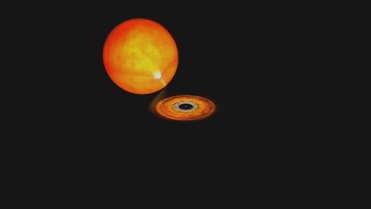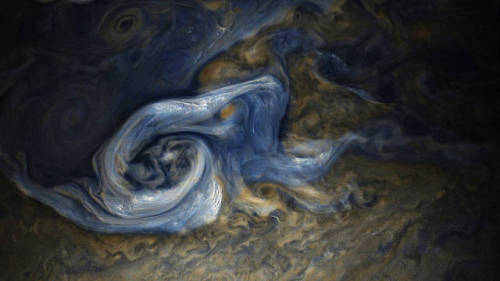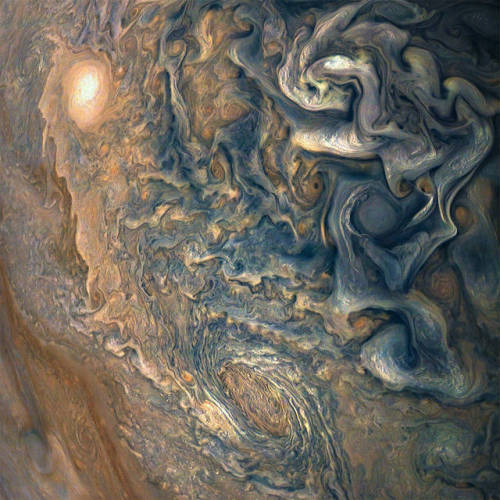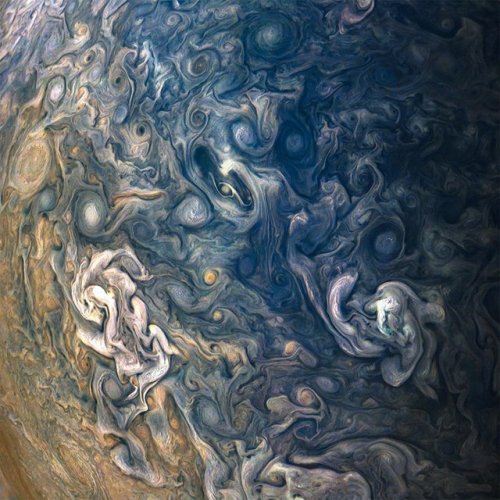Couple Goals




Couple goals
More Posts from Ocrim1967 and Others



Millisecond Pulsar with Magnetic Field Structure
A pulsar is a rapidly rotating neutron star that emits pulses of radiation (such as X-rays and radio waves) at regular intervals. A millisecond pulsar is one with a rotational period between 1 and 10 milliseconds, or from 60,000 to 6,000 revolutions per minute. Pulsars form in supernova explosions, but even newborn pulsars don’t spin at millisecond speeds, and they gradually slow down with age. If, however, a pulsar is a member of a binary system with a normal star, gas transferred from the companion can spin up an old, slow pulsar to the millisecond range.
Credit: NASA, Dana Berry: Lead Animator Michael McClare (HTSI)










Not Only Didn’t We Find Water On An Earth-Like Exoplanet, But We Can’t With Current Technology
“Over the past few decades, astronomers have uncovered thousands of new exoplanets. Some of them are rocky; some are temperate; some have water. However, the idea that exoplanet K2-18b is rocky, Earth-like, and has liquid water is absurd, despite recent headlines. Light filters through K2-18b’s atmosphere when it passes in front of its star, enabling us to measure what’s absorbed. Based on those absorption lines, the presence of many chemicals can be inferred, including water. K2-18b is, truly, the first known habitable-zone exoplanet to contain water. However, it is not rocky; its mass and radius are too large, necessitating a large gas envelope around it.”
How incredible was that report that came out last week: the first Earth-like, rocky exoplanet with liquid water on its surface has been discovered! If it were true, it would be incredible. Well, what we did find is still pretty remarkable, but it’s very different from what you’ve likely heard.
We did find water on the exoplanet in question, K2-18b, but only in the vapor phase and only in the atmosphere.
The exoplanet is closer to Earth in terms of mass and radius than any other with water on it, but the planet is still too massive and large to be rocky. It must have an envelope of hydrogen and helium, and both have had their presence detected.
If we want to find atmospheric biosignatures around Earth-like worlds, we need better observatories. Let’s build them! Here’s the real story.



Animated Fine Art
Collection by E Lynx of famous artworks that have been animated and rendered in 3D which you can interact with their respective @sketchfab upload:
More Here










🐱:(source)


HiPOD (31 August 2018) Dunes in South Xainza Crater
– They look so innocent… (270 km above the surface. Black and white is less than 5 km across; enhanced color is less than 1 km.)
NASA/JPL/University of Arizona





Study Tips Based on Your Hogwarts House
Just finished rewatching all 8 of the Harry Potter films last week… and I thought why not make my first graphic related to it? So, here’s study tips for each of the Hogwarts houses! I know some of these doesn’t apply to everyone, but I had really fun time making this :) Hope this helps!










Ten Solstice Facts That Everyone Should Know
“9.) The solstices are neither the hottest nor coldest days of the year. This one is actually very specific to Earth: the hottest times of the year typically correspond to approximately 6 weeks after the summer solstice, and approximately 6 weeks after the winter solstice. Other planets don’t have this same phenomenon for one very important reason: they don’t have the majority of their surfaces covered in liquid water.
The oceans themselves, being composed of large quantities of water and containing approximately 1,000 times the mass of Earth’s atmospheres, contain a tremendous amount of heat, and are slow to change their temperatures. We might receive more (or less) energy from the Sun on the summer (or winter) solstices, but the oceans require time to heat up or cool down. Global average temperature extremes, therefore, usually occur in early August and February, rather than at the June and December solstices.”
The solstice, Latin for the Sun standing still in the sky, occurs whenever the Earth’s axial tilt reaches a maximum relative to the Earth’s orbital plane around the Sun. With a tilt of 23.5 degrees, but a tilt that’s independent of our elliptical orbit around the Sun, many surprising and counterintuitive facts arise.
Want to know as many of them as possible? Come get this remarkable and fascinating list of educational facts on this year’s solstice: June 21, 2019!






Swirls of Jupiter
Jupiter is a very stormy, turbulent, violent planet. The planet completes a day (or one complete rotation) within roughly 10 hours, which creates massive winds, producing these swirls, and violent storms. The fast rotation coupled with the fact that the planet is nothing but gas greatly multiplies the Coriolis effect. Earth too has a Coriolis effect, this creates the characteristic hurricane shapes and also contributes to the fact that storms will spin the opposite direction in different hemispheres. Luckily, our rotation is slower - our storms are less frequent and less violent than they would be if our days were shorter.
The above images come from the recent Juno mission by NASA.
Stellar Winds
Stellar winds are fast moving flows of material (protons, electrons and atoms of heavier metals) that are ejected from stars. These winds are characterised by a continuous outflow of material moving at speeds anywhere between 20 and 2,000 km/s.

In the case of the Sun, the wind ‘blows’ at a speed of 200 to 300 km/s from quiet regions, and 700 km/s from coronal holes and active regions.

The causes, ejection rates and speeds of stellar winds vary with the mass of the star. In relatively cool, low-mass stars such as the Sun, the wind is caused by the extremely high temperature (millions of degrees Kelvin) of the corona.

his high temperature is thought to be the result of interactions between magnetic fields at the star’s surface, and gives the coronal gas sufficient energy to escape the gravitational attraction of the star as a wind. Stars of this type eject only a tiny fraction of their mass per year as a stellar wind (for example, only 1 part in 1014 of the Sun’s mass is ejected in this way each year), but this still represents losses of millions of tonnes of material each second. Even over their entire lifetime, stars like our Sun lose only a tiny fraction of 1% of their mass through stellar winds.

In contrast, hot, massive stars can produce stellar winds a billion times stronger than those of low-mass stars. Over their short lifetimes, they can eject many solar masses (perhaps up to 50% of their initial mass) of material in the form of 2,000 km/sec winds.

These stellar winds are driven directly by the radiation pressure from photons escaping the star. In some cases, high-mass stars can eject virtually all of their outer envelopes in winds. The result is a Wolf-Rayet star.

Stellar winds play an important part in the chemical evolution of the Universe, as they carry dust and metals back into the interstellar medium where they will be incorporated into the next generation of stars.
source (read more) + Wolf–Rayet star
-
 annaxbr3n liked this · 6 months ago
annaxbr3n liked this · 6 months ago -
 larswurks liked this · 1 year ago
larswurks liked this · 1 year ago -
 jayposlifime liked this · 1 year ago
jayposlifime liked this · 1 year ago -
 darkcountrywoods reblogged this · 1 year ago
darkcountrywoods reblogged this · 1 year ago -
 cafpousetcons liked this · 1 year ago
cafpousetcons liked this · 1 year ago -
 glamorous-cat liked this · 2 years ago
glamorous-cat liked this · 2 years ago -
 cycspecv liked this · 2 years ago
cycspecv liked this · 2 years ago -
 atphonehome reblogged this · 2 years ago
atphonehome reblogged this · 2 years ago -
 lachose-61 liked this · 2 years ago
lachose-61 liked this · 2 years ago -
 xhiunel liked this · 2 years ago
xhiunel liked this · 2 years ago -
 srtabarbiemarley reblogged this · 2 years ago
srtabarbiemarley reblogged this · 2 years ago -
 damadcopas reblogged this · 2 years ago
damadcopas reblogged this · 2 years ago -
 geminilouca reblogged this · 2 years ago
geminilouca reblogged this · 2 years ago -
 geminilouca liked this · 2 years ago
geminilouca liked this · 2 years ago -
 sailfindragon liked this · 2 years ago
sailfindragon liked this · 2 years ago -
 galand20 liked this · 2 years ago
galand20 liked this · 2 years ago -
 lufitah reblogged this · 2 years ago
lufitah reblogged this · 2 years ago